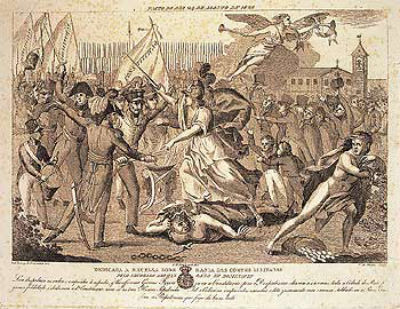The Brazilian cultural scene during A Era Vargas was marked by a rich variety of manifestations and the consolidation of other novelties never before experienced in our history. During the time when Vargas was at the head of the country, we observed that radio was the most important means of communication in existence. In addition to different musical rhythms, radio was also widely used in the dissemination of news and also featured the staging of soap operas that were accompanied by thousands of people.
Samba was the most prestigious musical genre by the Brazilian population, who were attentively awaiting the release of the marchinhas that were supposed to be a great success during Carnival. At that time, carnival was no longer a spontaneous and informal cultural manifestation, but gradually became a competitive event integrated by several samba schools. Francisco Alves, Mário Reis, Carmem Miranda, Sílvio Caldas and Orlando Silva were the most famous samba interpreters of that time.
In the field of literature, we observed that several of our authors focused on thinking about the identity of the Brazilian people. The prominent writers of that time saw Brazil as a nation made up of different individuals and customs. For this reason, literature focused on the so-called regionalist literature, which tried to create characters and stories that took place in specific regions of the Brazilian territory. Among the most important authors we can highlight the names of Graciliano Ramos, José Lins do Rego and Érico Veríssimo.
Despite all these artistic manifestations of great wealth, we must remember that the Vargas government also limited the freedom of artists at that time. Between 1937 and 1945, the Vargas government prohibited the dissemination and publication of any type of news or artistic expression that wanted to criticize his government. At that time he created the Department of Press and Propaganda, the DIP, which had the task of preventing artistic manifestations that speak ill of the government and invest in advertisements that speak well of Vargas.
In this way, we understand that the first fifteen years of Getúlio Vargas were marked by a series of cultural manifestations and the growth of the most varied types of communication vehicles. On the other hand, the censorship imposed during a part of his government prevented artistic expressions from being really free, as they were not they could criticize the government or address issues that were contrary to the ideals disseminated by Getúlio Vargas during the time he was ahead of the parents.
Take the opportunity to check out our video classes related to the subject:


